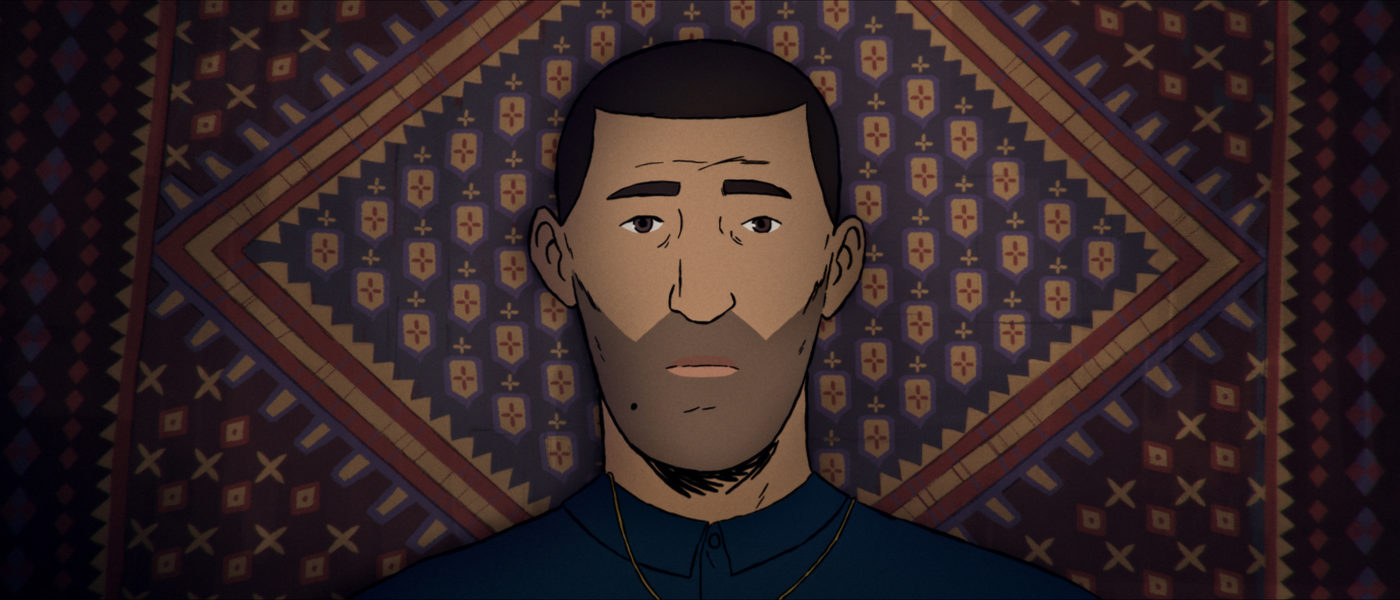Finding Oneself While Running Away in Gripping Animated Docudrama
DIRECTED BY JONAS POHER RASMUSSEN/2021
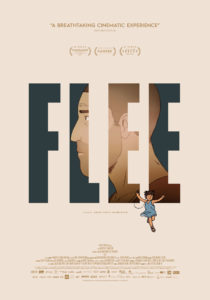
An animated documentary seems almost oxymoronic at first blush. The inherent artifice of animation, its function often only extending to a facsimile of the real, even in Disney-style “Illusion of Life” works the aim is more for lifelike movement, not storytelling. And yet, more and more artists look to the medium of animation in their documentation of the historical and the personal, with works like Waltz With Bashir and Tower offering more intimate portraits of their subjects and allowing filmmakers to recreate events in a way that offers greater flexibility than simple stock footage and feel less jarringly artificial than live-action reenactments in many docudramas.
2021’s Flee is the latest entry in the canon of animated documentaries, and is perhaps its strongest. Directed by Jonas Poher Rasmussen, Flee spotlights Amin Nawabi, a refugee of the Soviet-Afghan War living with his fiancé, as he recounts the perilous flight from his war-ravaged home to the relative safety of Denmark. Amin’s saga is told through lightly stylized animated reenactments, interspersed with occasional explorations of abstraction, in a visually distinct, powerful work of docudrama animation.
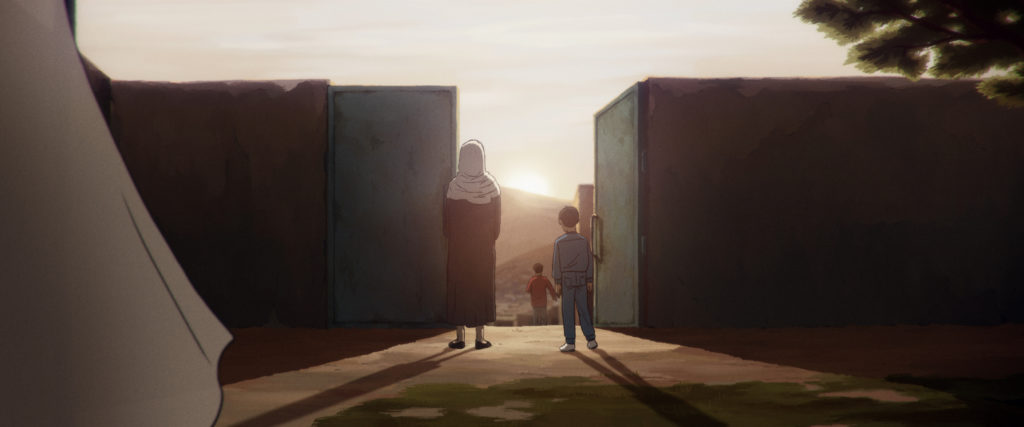
There are two major narrative throughlines in the film, both centering around Amin. The first is the story of Amin’s flight from Afghanistan to Denmark. In this segment, we follow a young Amin before the war, in better days, but still struggling to come to terms with his interest in other men, his queerness making feel alienated from others, while still trying to navigate the other trials of growing up experienced by his peers. These boyhood difficulties are forced to the back of Amin’s mind as the Nawabi family’s peaceful existence is shattered by the outbreak of the Soviet-Afghan War. Losing his father and forced to flee Afghanistan, Amin and his family take up residence in Russia, forced to endure unbearable treatment from cruel officials and relying on expired visas as they wait for Amin’s older brother in Sweden to pay for a human trafficker to help them escape.
Flee’s second major narrative element is in more personal interview with Rasmussen, framing the story of his flight from Afghanistan as a boy in the present day. In this, we learn the state of Amin’s life, primarily his plans to buy a home with his partner and his concerns about settling down. Additionally, Amin offers greater context to his story, revealing lies he was forced to keep for his own safety, making occasional additions to add greater context, and overall painting a fuller picture of himself while allowing the viewer to see the ways his tumultuous youth shaped him.
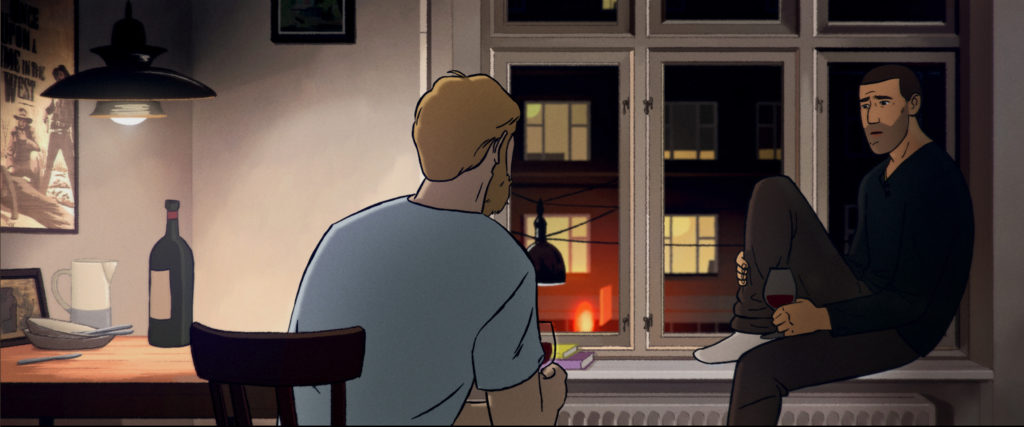
The story is well told, intercutting between Amin’s tense journey and the more relaxed, but still emotionally resonant and tonally consistent interludes offers respite while giving us a better understanding of our main subject. It offers a more intimate view of the conflict while still allowing a slightly wider scope of understanding through Amin’s brief sidebars adding greater context for his situation. I admit to being somewhat frustrated by the film’s reticence to interrogate the US’s involvement in arming the mujahedeen, yet understand why it isn’t explored here. Its emphasis on the inhumanity and misery caused by borders, and by nations’ often seemingly arbitrary and inscrutable ways of determining the fate of refugees more than compensates, and is just as relevant today as it was during Amin’s flight, if not moreso.
Amin himself is charming, clearly anxious in a way that certainly tracks given what he has been through, but resolute and providing a voice and tone that injects a great deal of warmth into his narration. He paints a portrait of a young man that was forced to confront the unthinkable and still carries with him a great deal of regret and guilt for what he was unable to do as a child, a burden that continues to weigh greatly upon him. Amin’s internal struggle as just a significant as the physical trials he faces as a refugee. Grappling with his own identity while forced to lie to keep himself alive, he works to come to terms with the real Amin after being forced to fabricate much of his identity to avoid being deported. It’s a satisfying arc, bringing closure to present-day Amin’s story and very effectively bookending the film.
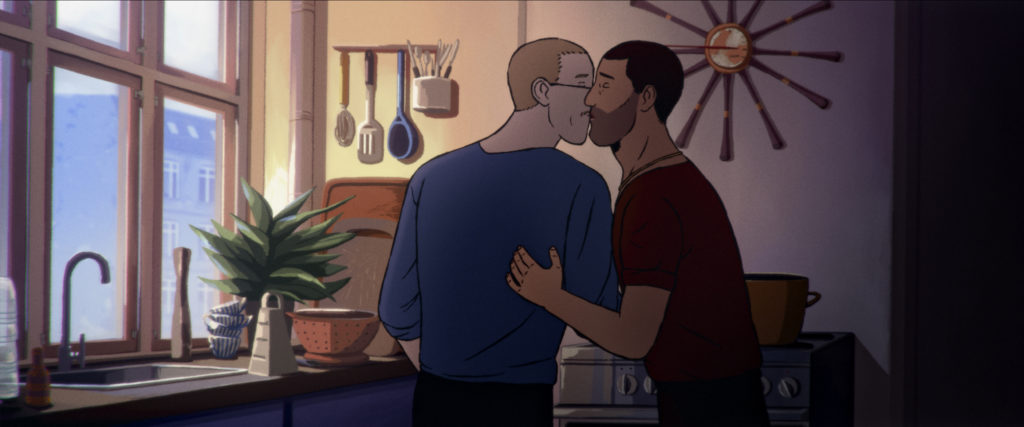
The animation in Flee is presented primarily through animatic-style limited animation, frequently only employing key frames and extremes while certain background elements and lighting effects compensate for the lack of in-between frames. There are times where it can admittedly be a bit distracting but overall I was able to quite quickly adjust to this style of limited animation. The charmingly stylized design work helps paper over some of these deficiencies, evoking something like the Tintin or April and the Extraordinary World with its combination of rounded, soft outlines with more realistic proportions.
Aside from this animatic style, Flee employs a small amount of live-action stock news footage to fill its runtime, which can be a bit jarring, but in a way that seems more intentional. It draws a sharp contrast between the businesslike formality of the broadcast news and the far more intimate, personal framing of the animated retelling. Flee also makes use of more abstract sequences, employing loosely defined charcoal outlines of people and structures that morph within the shot, realizing the more hazy, loosely defined segments of Amin’s story to remarkable effect. Indeed, I would have loved to see a bit more of this style, it’s a particularly potent way of conveying Amin’s mental state and conjuring a mood with a very minimalist style and it only sees less use as the film goes on.
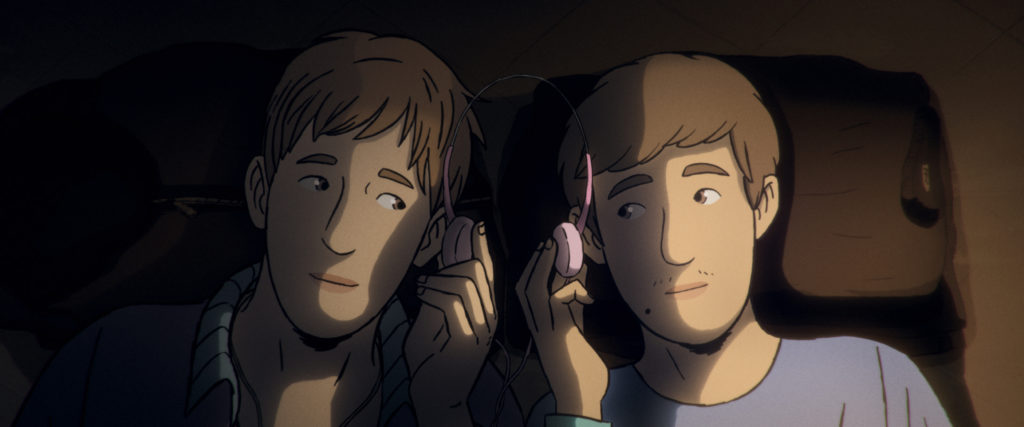
Flee is an exceptional work in the canon of animated documentaries, a very happy mix of elements from previous entries like Persepolis, Waltz With Bashir, and Tower that retains a distinctive identity while making it more approachable to a larger audience. It’s an effective, personal story that manages to blend its narrative parts in a highly satisfying fashion, balancing harrowing moments and quiet tenderness, all presented in via a charming visual style that employs effective flourishes of aesthetic variety wonderfully, if a bit sparingly. Amin’s story comes highly recommended, and I can only hope it serves opens more eyes to the power of animation as a medium for documentary filmmaking.


